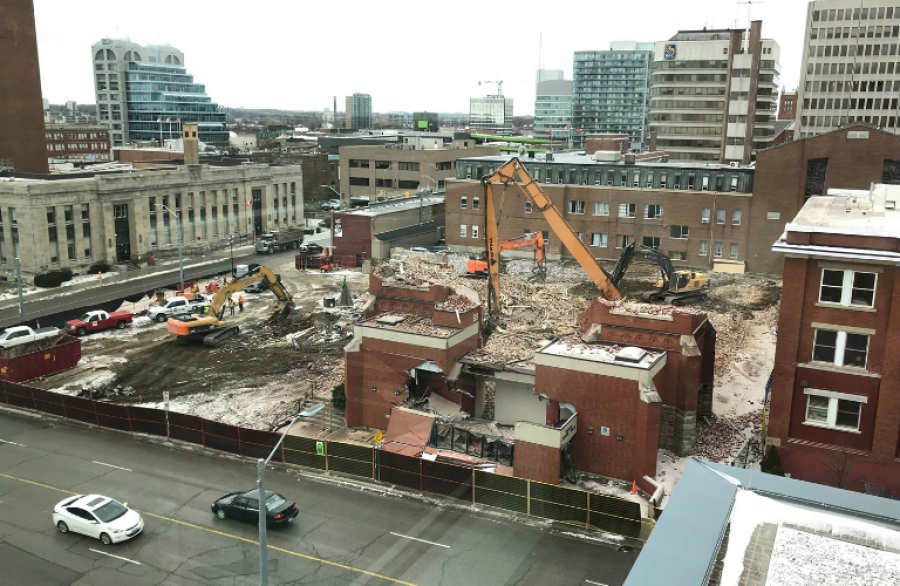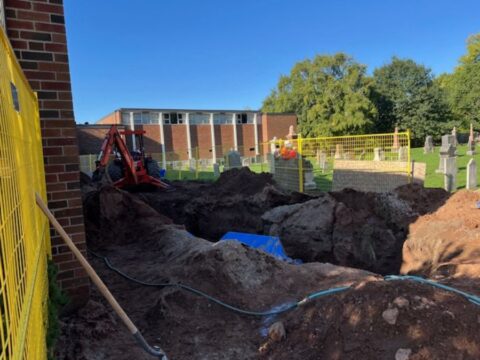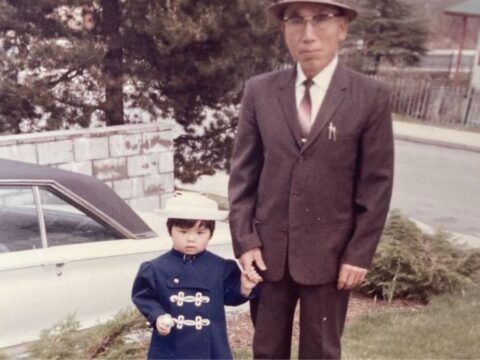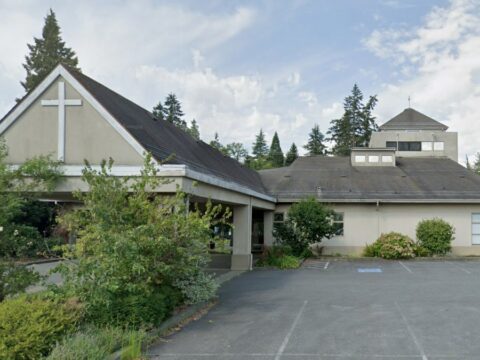I cried on the way home. As I passed the church building that was my spiritual home, Trinity United in Kitchener, Ont., I held out hope that the last archway, the last identifiable piece of the historic building, would somehow be spared demolition, maybe incorporated into the design for the new condominiums to be built in its place. Even as I watched the teeth on the scoop of the massive machine carefully pick at the bricks of that archway, I hoped. I briefly entertained the idea that the machine’s operator was allowing the archway its last moments of dignity before it sank with a sigh.
Too many times in recent months, I’ve walked by the old church and watched it come down, brick by brick. I took pictures or video each time I passed to document its demise. The big machines work incessantly, massive engines with long orange arms and yawning jaws. The church’s torn-down and crushed façade no longer resembles a building, let alone a sacred place.
You may unsubscribe from any of our newsletters at any time.
In the 15 years or so that I have been part of the congregation, that particular church structure has represented mother, father, Creator and community for me.
The building’s beautiful trappings gave us pause, brought us together in communal prayer and praise. Stained-glass windows punctuated with Tiffany glass and inscribed with Scripture and memorial names; the exquisite wood fittings; the rows of pews; the towering balcony; the massive pipe organ . . . it was a place designed to sweep your eyes heavenward, a place of peace.
The building stood on that spot for 112 years and dominated the corner with its height and size. Each brick is a memory of a powerhouse congregation that began with Kitchener’s founders more than 175 years ago, and continued a legacy of social justice, generosity and leadership. Generations of families worshipped there, were married there, baptized their children there and were honoured in death there.
Within those walls, the congregation mourned its war heroes, its dead. It hosted annual community breakfasts and the Out of the Cold program. It sponsored refugees. It made space for community partners, concerts and lectures. The choir brought in guest conductors and recorded albums. Generations of children marked the transition from nursery into Sunday school by “going through the gates,” a nearly-century-old tradition, where children literally passed through wooden picket gates at the front of the church and received their first children’s Bible as a gift on the other side.

That’s a lot of history to consider.
The dialogue about redevelopment began in the 1960s, and the building was finally sold in 2017. In the meantime, many people left, for many different reasons. Some stayed with the congregation when it moved to a worship space up the hill, but they did so reluctantly. Some still cannot come to terms with the pain of seeing a beloved building, once so full of history and people, now a pile of rubble. And some still fight against change.
The building’s shell became a home for the unhoused, despite the boarded-up windows, security fences and spotlights. Two days in a row, someone lit fires inside, hastening its destruction as the sacred became the sorry. I cried then, too, upon hearing about the fire on the news one early winter morning. A friend, an artist, paid tribute to the church day after day, as she took photos and painted the loneliness of its empty shell and then its rubble.
On my way back past the site, two hours after I’d witnessed the gentle tipping of bricks out of their mortar, the archway was gone. It was the last walled symbol of our past, of generations of faith.
The funny thing about faith, though, is that it doesn’t need a building to make it a real and living thing. The congregation lives on. We are reinventing ourselves, but we are still embedded in this community, downtown, perhaps even stronger because of the partnerships we are forging in place of bricks and mortar.
I’ve come to think of the big machines as helpers. Even though they are dismantling our past, have been for weeks, they are also bringing us closure. They are helping us remember what is most important. They are gently reminding us where our real faith lives. Not in a building. Not under a spire, nor behind a heavy oak door.
Our faith lives here, and now. With those who came with us, and with those who left us. Our faith lives wherever we happen to hang our hat.















